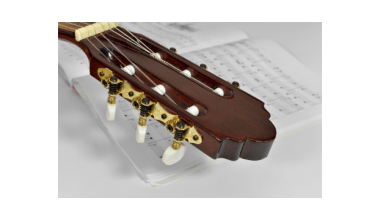What is Split Streaming?
Have you ever wondered how artists make money from their music on streaming platforms? It’s not as simple as getting paid every time someone listens. Right now, most platforms use a system that splits all the money based on the total number of streams across their service. This means big artists with millions of streams often get the biggest share, leaving smaller artists with only crumbs. Here’s where split streaming comes to the rescue! Split streaming is a new way to share money made from streaming directly with everyone who worked on a song. This includes the singer, producer, lyricist, and even the guitarist who played that catchy riff. It ensures that everyone gets their fair share, right when the song is streamed. It’s a game-changer for fairness in the music industry.
Why the Current System is Unfair
Let’s break down how things work now. Most streaming platforms like Spotify or Apple Music pool all the money they earn from subscriptions and ads. Then, they divide it based on the total streams. Sounds okay, right? But here’s the catch: big artists with millions of streams take a huge portion of that pool. Smaller, independent artists often get pennies, even if their fans are paying for subscriptions.
For example, imagine you’re an independent musician. Even if your song is streamed 10,000 times, you might not see much money because most of the cash goes to bigger artists who dominate the charts. That’s why independent artists have been demanding a better system.
How Does Split Streaming Work?
Here’s where split streaming steps in to save the day. Instead of pooling all the money and dividing it later, this system works differently. With split streaming, every stream is counted individually, and the money is divided instantly based on who contributed to the song. If you and your producer agree to split earnings 70-30, then for every stream, 70% goes to you, and 30% goes to your producer. Easy, right?
Step-by-Step: How Split Streaming Works
- Set the Splits: Artists and contributors decide in advance how to split the earnings. This could be 50-50 between the artist and producer or any other arrangement.
- Stream the Song: A listener streams the track on a platform.
- Instant Payout: The platform automatically splits the revenue and sends it to each person’s account. No waiting, no confusion.
Why Split Streaming is Better for Artists
Split streaming is like a breath of fresh air for artists, especially independent ones. Here’s why:
1. Fair Payments
With split streaming, you get paid based on your actual contribution to the music, not your popularity. It levels the playing field.
2. Transparency
No more guessing where your money comes from. Artists can see exactly how much they’ve earned from each stream, and contributors can track their earnings too.
3. Fast Payments
Why wait months to see your royalty check? Split streaming ensures you get paid almost instantly when your music is streamed.
4. Empowers Independent Artists
For smaller artists, every penny counts. Split streaming helps them earn more, build their careers, and stay motivated to create great music.
How Split Streaming Helps Everyone in Music
Split streaming isn’t just for artists. It’s a win-win for everyone involved in creating music:
- Producers and Lyricists: These behind-the-scenes heroes finally get fair recognition and payment for their work.
- Music Fans: Fans can support their favorite artists directly by streaming their songs.
- Platforms: Streaming services benefit by attracting more independent artists who appreciate fair payment models.
For instance, platforms like Audius and Deliver My Tune are already making strides in offering services that align with split streaming principles. Tools like AI mastering and digital distribution help artists enhance their music and reach a global audience.
The Role of Technology in Split Streaming
Modern technology makes split streaming possible. Streaming platforms now use advanced algorithms to calculate earnings in real time. This means contributors can get paid directly without middlemen or long delays. Blockchain technology, for instance, can add another layer of trust and transparency by securely tracking who owns what portion of a song.
Real-Life Example of Split Streaming
Let’s look at a simple example. Imagine a song created by:
- An artist (50% share)
- A producer (30% share)
- A lyricist (20% share)
Every time the song is streamed, the platform directly sends 50% of the earnings to the artist, 30% to the producer, and 20% to the lyricist. Whether the song gets 1 stream or 1 million, everyone gets their share right away.
This system works even for complex collaborations. If five people worked on a track, the earnings could be split into smaller percentages, ensuring fairness for everyone.
Challenges of Split Streaming
Like any new idea, split streaming has its challenges. Some of these include:
- Platform Adoption: Many platforms still use old models. It takes time for them to update their systems.
- Legal Agreements: Artists need clear contracts to avoid disputes over revenue splits.
- Education: Many artists aren’t aware of how split streaming works or how to use it.
But these challenges are not impossible to overcome. As more platforms adopt split streaming, these hurdles will fade away.
Why Split Streaming is the Future
The future of music lies in fairness, and split streaming leads the way. Independent artists, producers, and even fans are pushing for systems that support creativity over popularity. The music industry thrives when everyone benefits, not just the biggest stars.
How You Can Use Split Streaming Today
If you’re an artist, you can start using split streaming by:
- Choosing platforms that support it, like Audius or Deliver My Tune.
- Signing clear agreements with collaborators.
- Educating yourself about your rights as a creator.
Split streaming isn’t just a dream. It’s already happening, and it’s here to stay.
Conclusion: A Fairer Music World Awaits
Split streaming changes the way we think about music royalties. It’s fair, fast, and transparent, making it the perfect system for the modern music industry. Whether you’re an artist, producer, or a fan, split streaming creates a better experience for everyone.
So, the next time you stream a song, think about how split streaming could make the process fairer for the people behind the music you love.
For further reading, explore these related articles:
For additional resources on music marketing and distribution, visit Deliver My Tune.






